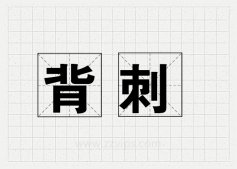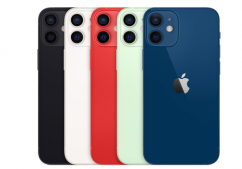Fragment 是什么
碎片(Fragment)是一种可以嵌入在活动(activity)当中的 UI 片段。
一、碎片的简单用法
创建两个布局文件:
|
1
2
3
4
5
6
7
8
9
10
11
12
13
|
<LinearLayout xmlns:android="http://schemas.android.com/apk/res/android" android:layout_width="match_parent" android:layout_height="match_parent" android:orientation="vertical" > <Button android:id="@+id/button" android:layout_width="wrap_content" android:layout_height="wrap_content" android:layout_gravity="center_horizontal" android:text="Button" /> </LinearLayout>//left_fragment.xml |
|
1
2
3
4
5
6
7
8
9
10
11
12
13
14
15
|
<LinearLayout xmlns:android="http://schemas.android.com/apk/res/android" android:layout_width="match_parent" android:layout_height="match_parent" android:background="#00ff00" android:orientation="vertical" > <TextView android:layout_width="wrap_content" android:layout_height="wrap_content" android:layout_gravity="center_horizontal" android:textSize="20sp" android:text="This is right fragment" /> </LinearLayout>//right_fragment.xml |
所有的自定义 Fragment 都需要继承 Fragment 类:
|
1
2
3
4
5
6
7
8
9
10
11
12
|
public class LeftFragment extends Fragment { @Override public View onCreateView(LayoutInflater inflater, ViewGroup container, Bundle savedInstanceState) { View view = inflater.inflate(R.layout.left_fragment, container, false); return view; }}public class RightFragment extends Fragment { @Override public View onCreateView(LayoutInflater inflater, ViewGroup container, Bundle savedInstanceState) { View view = inflater.inflate(R.layout.right_fragment, container, false); return view; }} |
最后定义 activity_main.xml
|
1
2
3
4
5
6
7
8
9
10
11
12
13
14
15
16
|
<LinearLayout xmlns:android="http://schemas.android.com/apk/res/android" android:layout_width="match_parent" android:layout_height="match_parent" > <fragment android:id="@+id/left_fragment" android:name="com.example.fragmenttest.LeftFragment" android:layout_width="0dp" android:layout_height="match_parent" android:layout_weight="1" /> <fragment android:id="@+id/right_fragment" android:name="com.example.fragmenttest.RightFragment" android:layout_width="0dp" android:layout_height="match_parent" android:layout_weight="1" /> </LinearLayout> |
二、动态添加碎片
可以在代码当中动态添加碎片:
|
1
2
3
4
5
6
7
8
9
10
11
12
13
14
|
@Override public void onClick(View v) { switch (v.getId()) { case R.id.button: AnotherRightFragment fragment = new AnotherRightFragment(); FragmentManager fragmentManager = getFragmentManager(); FragmentTransaction transaction = fragmentManager. beginTransaction(); transaction.replace(R.id.right_layout, fragment); transaction.commit(); break; default: break; } } |
动态添加碎片主要分为 5 步。
1、创建待添加的碎片实例。
2、获取到 FragmentManager,在活动中可以直接调用 getFragmentManager()方法得到。
3、开启一个事务,通过调用 beginTransaction()方法开启。
4、向容器内加入碎片,一般使用 replace()方法实现,需要传入容器的 id 和待添加的碎片实例。
5、提交事务,调用 commit()方法来完成。
三、在碎片中模拟返回栈
通过点击按钮添加了一个碎片之后,这时按下 Back 键程序就会直接退出。
|
1
2
3
4
5
6
7
8
9
10
11
12
13
14
15
16
17
18
|
public class MainActivity extends Activity implements OnClickListener {...... @Override public void onClick(View v) { switch (v.getId()) { case R.id.button: AnotherRightFragment fragment = new AnotherRightFragment(); FragmentManager fragmentManager = getFragmentManager(); FragmentTransaction transaction = fragmentManager. beginTransaction(); transaction.replace(R.id.right_layout, fragment); transaction.addToBackStack(null); transaction.commit(); break; default: break; } }} |
四、碎片和活动之间进行通信
为了方便碎片和活动之间进行通信,FragmentManager 提供了一个类似于 findViewById() 的方法,专门用于从布局文件中获取碎片的实例,代码如下所示:
|
1
2
|
RightFragment rightFragment = (RightFragment) getFragmentManager() .findFragmentById(R.id.right_fragment); |
在每个碎片中都可以通过调用getActivity() 方法来得到和当前碎片相关联 的活动实例,代码如下所示:
|
1
|
MainActivity activity = (MainActivity) getActivity(); |
五、碎片的生命周期
运行状态:当一个碎片是可见的,并且它所关联的活动正处于运行状态时,该碎片也处于运行状态。
暂停状态:当一个活动进入暂停状态时(由于另一个未占满屏幕的活动被添加到了栈顶),与它相关联的可见碎片就会进入到暂停状态。
停止状态:当一个活动进入停止状态时,与它相关联的碎片就会进入到停止状态。
销毁状态:碎片总是依附于活动而存在的,因此当活动被销毁时,与它相关联的碎片就会进入 到销毁状态。
下面是碎片的一些回调方法:
- onAttach() 当碎片和活动建立关联的时候调用。
- onCreateView() 为碎片创建视图(加载布局)时调用。
- onActivityCreated() 确保与碎片相关联的活动一定已经创建完毕的时候调用。
- onDestroyView() 当与碎片关联的视图被移除的时候调用。
- onDetach() 当碎片和活动解除关联的时候调用。
以上就是关于Android中碎片Fragment的全部内容,希望对大家的学习有所帮助。





